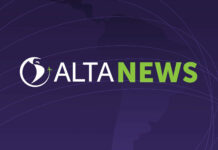More air traffic capacity, management, navigation services, terminals, runways and related infrastructure is needed by Asia Pacific airlines, with growing concerns about the level of investment and quality of governance being committed to in the region.
This is according to the director general of the Association of Asia Pacific Airlines, (AAPA) Andrew Herdman, and the chief executive officer and director general of the International Air Transport Association (IATA), Tony Tyler.
Speaking at AAPA’s 58th Assembly of the Presidents held in Tokyo from 18-19 November, the two leaders expressed concerns and hopes about infrastructure investment, governance, profitability and safety. For Herdman, governments have a key role to play in coordinating these large scale investments and ensuring that there is appropriate regulatory oversight that can keep pace with the industry’s growth.
Tyler is concerned about airports in particular. He cites examples of well run government owned airports such as Hong Kong International Airport, Singapore Changi Airport and Incheon International Airport, but is worried about governments wanting to encourage private capital investment and corporate run airfields. “I am hard pressed to thnk of any private sector airport with a solid reputation better than these,” Tyler tells the assembly.
In his view, private airports will be successful with regulation that embeds good governance. “Private capital is not a panacea. To be successful it must have a strong governance structure embedded in regulation. It must set reasonable expectations on returns – in line with airports being public utilities, not hedge fun investments.” Tyler points to India as an example of a country where “good infrastructure” can “fail”.
Failure means safety compromised in aviation and Tyler and Herdman also spoke about its importance. “Safety remains the industry’s number one priority,” Herdman tells the presidents. “The unprecedented loss of [Malaysian Airlines flights] MH370 and MH17 this year raise a number of important issues confronting the industry, including procedures related to aircraft tracking and governing flights over conflict zones.”
Tyler tells the gathering that, “the recommendations of an IATA-led industry-wide task force will be considered by the IATA board of governors in a few weeks.” That task force is looking at the issues and solutions relating to the Malaysian Airlines losses. Referring to that IATA work and the International Civil Aviation Organization (ICAO) study of the issues around the MH17 event, Tyler adds, “both of these bodies of work will be focal points for the ICAO safety summit to be held in February next year.”
Infrastructure and safety are both costs that cannot be shirked and they are invetsments that diminsh profitability. Herdman warned his audience about their situation, with Asian carriers seeing lower yields, surplus capacity and a need to carefully manage the fleets. He says: “For many, a return to profitability in the near future is a particular challenge.” Despite all the challenges, Herdman and Tyler ended their speeches on upbeat notes. Tyler says: “The industry’s centre of gravity is shifting East and Asia Pacific…is now at the centre of growth.”













